 W
WMariotto di Bindo di Biagio Albertinelli was an Italian Renaissance painter active in Florence. He was a close friend and collaborator of Fra Bartolomeo.
 W
WFra Angelico was an Italian painter of the Early Renaissance, described by Vasari in his Lives of the Artists as having "a rare and perfect talent". He earned his reputation primarily for the series of frescoes he made for his own friary, San Marco, in Florence.
 W
WAntoninus of Florence, was an Italian Dominican friar, who ruled as an archbishop of Florence. He is venerated as a saint by the Catholic Church.
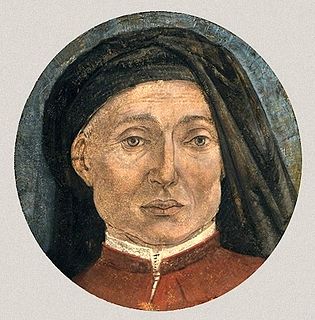 W
WAlesso or Alessio Baldovinetti was an Italian early Renaissance painter and draftsman.
 W
WFrancesco Berlinghieri (1440–1501) was an Italian scholar and humanist who lived during the fifteenth century. He promoted the value of classical Greek learning and was one of the first to print a text based on Ptolemy's Geographica. Berlinghieri studied poetry under the tutelage of Cristoforo Landino.
 W
WFilippo Brunelleschi, considered to be a founding father of Renaissance architecture, was an Italian architect and designer, and is now recognized to be the first modern engineer, planner, and sole construction supervisor. He is most famous for designing the dome of the Florence Cathedral, a feat of engineering that had not been accomplished since antiquity, as well as the development of the mathematical technique of linear perspective in art which governed pictorial depictions of space until the late 19th century and influenced the rise of modern science. His accomplishments also include other architectural works, sculpture, mathematics, engineering, and ship design. His principal surviving works can be found in Florence, Italy.
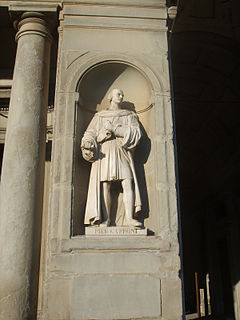 W
WPiero Capponi was an Italian statesman and warrior from Florence; he is best celebrated for his bold defiance of the King of France in 1494.
 W
WAndrea del Castagno or Andrea di Bartolo di Bargilla was an Italian painter from Florence, influenced chiefly by Masaccio and Giotto di Bondone. His works include frescoes in Sant'Apollonia in Florence and the painted equestrian monument of Niccolò da Tolentino (1456) in the Cathedral in Florence. He in turn influenced the Ferrarese school of Cosmè Tura, Francesco del Cossa and Ercole de' Roberti.
 W
WDonato di Niccolò di Betto Bardi, better known as Donatello, was an Italian sculptor of the Renaissance. Born in Florence, he studied classical sculpture and used this to develop a complete Renaissance style in sculpture, whose periods in Rome, Padua and Siena introduced to other parts of Italy a long and productive career. He worked with stone, bronze, wood, clay, stucco and wax, and had several assistants, with four perhaps being a typical number. Though his best-known works were mostly statues in the round, he developed a new, very shallow, type of bas-relief for small works, and a good deal of his output was larger architectural reliefs.
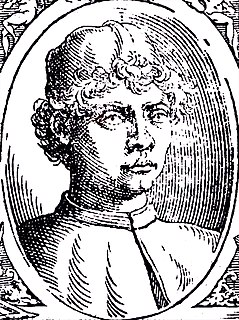 W
WPiero della Francesca, originally named Piero di Benedetto, was an Italian painter of the Early Renaissance. To contemporaries he was also known as a mathematician and geometer. Nowadays Piero della Francesca is chiefly appreciated for his art. His painting is characterized by its serene humanism, its use of geometric forms and perspective. His most famous work is the cycle of frescoes The History of the True Cross in the church of San Francesco in the Tuscan town of Arezzo.
 W
WLorenzo Ghiberti, born Lorenzo di Bartolo, was a Florentine Italian artist of the Early Renaissance best known as the creator of the bronze doors of the Florence Baptistery, called by Michelangelo the Gates of Paradise. Trained as a goldsmith and sculptor, he established an important workshop for sculpture in metal. His book of Commentarii contains important writing on art, as well as what may be the earliest surviving autobiography by any artist.
 W
WDomenico Ghirlandaio, also spelled as Ghirlandajo, was an Italian Renaissance painter born in Florence. Ghirlandaio was part of the so-called "third generation" of the Florentine Renaissance, along with Verrocchio, the Pollaiolo brothers and Sandro Botticelli. Ghirlandaio led a large and efficient workshop that included his brothers Davide Ghirlandaio and Benedetto Ghirlandaio, his brother-in-law Bastiano Mainardi from San Gimignano, and later his son Ridolfo Ghirlandaio. Many apprentices passed through Ghirlandaio's workshop, including the famous Michelangelo. Ghirlandaio's particular talent lay in his ability to posit depictions of contemporary life and portraits of contemporary people within the context of religious narratives, bringing him great popularity and many large commissions.
 W
WBenozzo Gozzoli was an Italian Renaissance painter from Florence. A pupil of Fra Angelico, Gozzoli is best known for a series of murals in the Magi Chapel of the Palazzo Medici-Riccardi, depicting festive, vibrant processions with fine attention to detail and a pronounced International Gothic influence. The chapel's fresco cycle reveals a new Renaissance interest in nature with its realistic depiction of landscapes and vivid human portraits. Gozzoli is considered one of the most prolific fresco painters of his generation. While he was mainly active in Tuscany, he also worked in Umbria and Rome.
 W
WLeonardo da Vinci was an Italian polymath of the High Renaissance who is widely considered one of the most diversely talented individuals ever to have lived. While his fame initially rested on his achievements as a painter, he also became known for his notebooks, in which he made drawings and notes on science and invention; these involve a variety of subjects including anatomy, astronomy, botany, cartography, painting, and palaeontology. Leonardo's genius epitomized the Renaissance humanist idea, and his collective works compose a contribution to later generations of artists rivalled only by that of his contemporary Michelangelo.
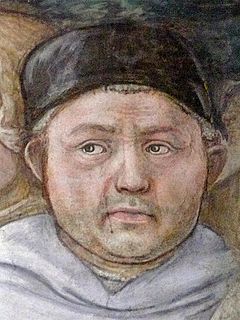 W
WFra' Filippo Lippi, also known as Lippo Lippi, was an Italian painter of the Quattrocento.
 W
WNiccolò di Bernardo dei Machiavelli was an Italian Renaissance diplomat, philosopher and writer, best known for The Prince, written in 1513. He has often been called the father of modern political philosophy and political science.
 W
WMasaccio, born Tommaso di Ser Giovanni di Simone, was a Florentine artist who is regarded as the first great Italian painter of the Quattrocento period of the Italian Renaissance. According to Vasari, Masaccio was the best painter of his generation because of his skill at imitating nature, recreating lifelike figures and movements as well as a convincing sense of three-dimensionality. He employed nudes and foreshortenings in his figures. This had seldom been done before him.
 W
WCosimo di Giovanni de' Medici, called "the Elder" and posthumously "Father of the Fatherland", was an Italian banker and politician, the first member of the Medici family which effectively ruled Florence during much of the Italian Renaissance. Despite his influence, his power was not absolute; Florence's legislative councils at times resisted his proposals throughout his life, and he was viewed as first among equals, rather than an autocrat. His power derived from his wealth as a banker, and he was a patron of arts, learning and architecture.
 W
WGiovanni di Bicci de' Medici was an Italian banker and founder of the Medici Bank. While other members of the Medici family, such as Chiarissimo di Giambuono de' Medici, who served in the Signoria of Florence in 1201, and Salvestro de' Medici, who was implicated in the Ciompi Revolt of 1378, are of historical interest, it was Giovanni's founding of the family bank that truly initiated the family's rise to power in Florence. He was the father of Cosimo de' Medici and of Lorenzo the Elder; grandfather of Piero di Cosimo de' Medici; great-grandfather of Lorenzo de' Medici ; and the great-great-great-grandfather of Cosimo I de' Medici, Grand Duke of Tuscany.
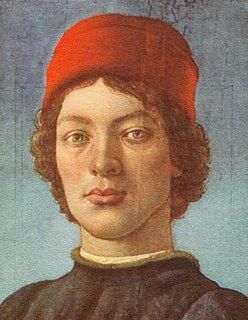 W
WGiovanni de' Medici, in full Giovanni di Pierfrancesco de' Medici, later known as il Popolano was an Italian nobleman of the Medici House of Florence. He was the son of Pierfrancesco di Lorenzo de' Medici, and therefore a member of a secondary branch of the family.
 W
WLorenzo de' Medici was an Italian statesman, de facto ruler of the Florentine Republic and the most powerful and enthusiastic patron of Renaissance culture in Italy. Also known as Lorenzo the Magnificent by contemporary Florentines, he was a magnate, diplomat, politician and patron of scholars, artists, and poets. As a patron, he is best known for his sponsorship of artists such as Botticelli and Michelangelo. He held the balance of power within the Italic League, an alliance of states that stabilized political conditions on the Italian peninsula for decades, and his life coincided with the mature phase of the Italian Renaissance and the Golden Age of Florence. On the foreign policy front, Lorenzo manifested a clear plan to stem the territorial ambitions of Pope Sixtus IV, in the name of the balance of the Italian League of 1454. For these reasons, Lorenzo was the subject of the Pazzi conspiracy (1478), in which his brother Giuliano was assassinated. The Peace of Lodi of 1454 that he helped maintain among the various Italian states collapsed with his death. He is buried in the Medici Chapel in Florence.
 W
WLorenzo di Pierfrancesco de' Medici, nicknamed the Popolano, was an Italian banker and politician, the brother of Giovanni il Popolano. He belonged to the junior branch of the House of Medici of Florence.
 W
WPiero di Cosimo de' Medici , was the de facto ruler of Florence from 1464 to 1469, during the Italian Renaissance.
 W
WPiero di Lorenzo de' Medici, called Piero the Unfortunate, was the Lord of Florence from 1492 until his exile in 1494.
 W
WMichelangelo di Lodovico Buonarroti Simoni, known best as simply Michelangelo, was an Italian sculptor, painter, architect and poet of the High Renaissance born in the Republic of Florence, who exerted an unparalleled influence on the development of Western art. His artistic versatility was of such a high order that he is often considered a contender for the title of the archetypal Renaissance man, along with his rival, the fellow Florentine, Leonardo da Vinci. Several scholars have described Michelangelo as the greatest artist of his age and even as the greatest artist of all time.
 W
WDiotisalvi Neroni was an Italian politician. He wrote Florentina Syndicatus.
 W
WNiccolò de' Niccoli was an Italian Renaissance humanist.
 W
WAntonio del Pollaiuolo, also known as Antonio di Jacopo Pollaiuolo or Antonio Pollaiuolo, was an Italian painter, sculptor, engraver and goldsmith during the Italian Renaissance.
 W
WCosimo Rosselli (1439–1507) was an Italian painter of the Quattrocento, active mainly in his birthplace of Florence, but also in Pisa earlier in his career in 1481-82 in the Sistine Chapel in Rome, where he painted some of the large frescoes on the side walls. Though generally regarded as a lesser talent in comparison to Sandro Botticelli, Pietro Perugino and Domenico Ghirlandaio, who were all also active at the Sistine Chapel, Rosselli was still able to win large and important commission throughout his career, a testament to his high level of activity in his native Florence. Important local commissions include a fresco in the cloister of Santissima Annunziata, Florence and those in the Chapel of the Holy Blood in Sant'Ambrogio, Florence.
 W
WAntonio Gamberelli (1427–1479), nicknamed Antonio Rossellino for the colour of his hair, was an Italian sculptor. His older brother, from whom he received his formal training, was the sculptor and architect Bernardo Rossellino.
 W
WBernardo Rucellai, also known as Bernardo di Giovanni Rucellai or as Latin: 'Bernardus Oricellarius', was a member of the Florentine political and social elite. He was the son of Giovanni di Paolo Rucellai (1403–1481) and father of Giovanni di Bernardo Rucellai (1475–1525). He was married to Nannina de' Medici, the elder sister of Lorenzo de' Medici, and was thus uncle to Popes Leo X and Clement VII, who were cousins. Oligarch, banker, ambassador and man of letters, he is today remembered principally for the meetings of the members of the Accademia platonica in the Orti Oricellari, the gardens of his house in Florence, the Palazzo Rucellai, where Niccolò Machiavelli gave readings of his Discorsi.
 W
WGiovanni di Bernardo Rucellai was an Italian humanist, poet, dramatist and man of letters in Renaissance Florence, in Tuscany, Italy. A member of a wealthy family of wool merchants and one of the richest men in Florence, he was cousin to Pope Leo X and linked by marriage to the powerful Strozzi and de' Medici families. He was born in Florence, and died in Rome. He was the son of Bernardo Rucellai (1448–1514) and grandson of Giovanni di Paolo Rucellai (1403–1481). He is now remembered mostly for his poem Le Api, one of the first poems composed in versi sciolti to achieve widespread acclaim.
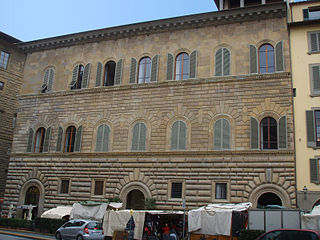 W
WJacopo Salviati, was an Italian politician and son-in-law of Lorenzo de' Medici. He was married to the prestigious Lucrezia de' Medici, daughter of Lorenzo de' Medici, on 10 September 1486, and they would have 10 children together. The son of Giovanni Salviati and Maddalena Gondi, he devoted himself to the economic affairs of the family, becoming very wealthy. He then engaged in political life. He was Prior of the Guilds in 1499 and 1518, then gonfalonier of Justice in 1514. In 1513, he was appointed ambassador to Rome.
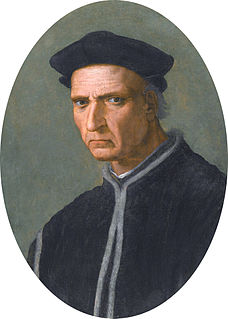 W
WPiero di Tommaso Soderini also known as Pier Soderini, was an Italian statesman of the Republic of Florence.
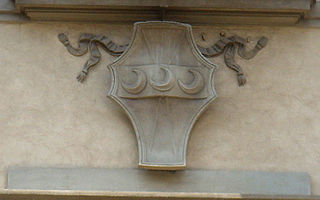 W
WStrozzi is the name of an ancient Florentine family, who like their great rivals the Medici family, began in banking before moving into politics. Until its exile from Florence in 1434, the Strozzi family was by far the richest in the city, and was rivaled only by the Medici family, who ultimately took control of the government and ruined the Strozzi both financially and politically. This political and financial competition was the origin of the Strozzi-Medici rivalry. Later, while the Medici ruled Florence, the Strozzi family ruled Siena, which Florence attacked, causing great animosity between the two families. Soon afterwards, the Strozzi married into the Medici family, essentially giving the Medici superiority.
 W
WFilippo Strozzi the Elder was an Italian banker and statesman, a member of the affluent Strozzi family of Florence.
 W
WPalla di Onofrio Strozzi was an Italian banker, politician, writer, philosopher and philologist.
 W
WThis timeline lists important events relevant to the life of the Italian diplomat, writer and political philosopher Niccolò di Bernardo dei Machiavelli (1469–1527).
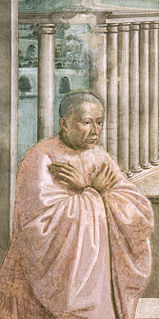 W
WGiovanni Tornabuoni was an Italian merchant, banker and patron of the arts from Florence.
 W
WPaolo Uccello, born Paolo di Dono, was a Florentine painter and mathematician who was notable for his pioneering work on visual perspective in art. In his book Lives of the Most Excellent Painters, Sculptors, and Architects, Giorgio Vasari wrote that Uccello was obsessed by his interest in perspective and would stay up all night in his study trying to grasp the exact vanishing point. While his contemporaries used perspective to narrate different or succeeding stories, Uccello used perspective to create a feeling of depth in his paintings. His best known works are the three paintings representing the battle of San Romano, which were wrongly entitled the Battle of Sant'Egidio of 1416 for a long period of time.